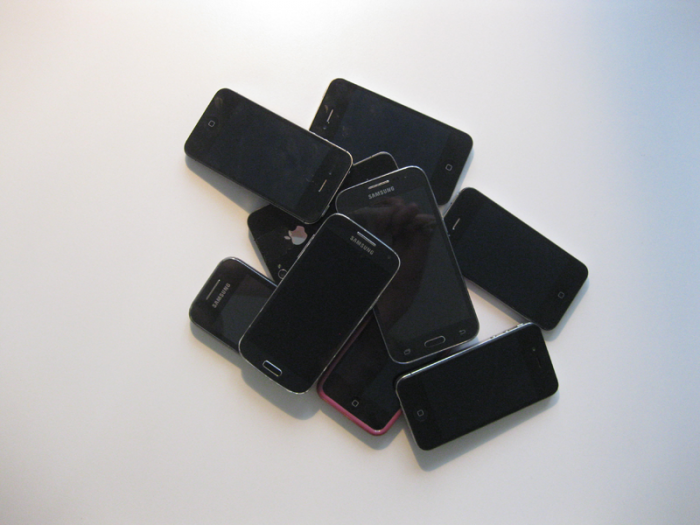Global players, such as BlueOrchard, have paved the way to leverage both private and public capital, deploying it across the globe to finance microloans, empowering millions of low-income entrepreneurs worldwide.
Despite significant progress over the past decade, many populations remain unbanked. Rural and remote communities which are harder to reach still struggle to gain access to financial services they need.
Yet, a technology trend is driving fast progress and accelerating financial inclusion on a global scale; mobile banking. The unique situation of emerging countries, where mobile penetration has increased exponentially over the past years but access and use of bank accounts remain low, has set the scene for mobile banking to alter the financial landscape. In 2013, research showed that the 7 billion people living in the world owned 6 billion mobile phones but only had 2 billion bank accounts. The example of Bangladesh illustrates this discrepancy where 57% of the population owns a mobile phone but only 13% has a formal bank account.
Kenya is the flagship example of the impact mobile banking can have. Though many may not consider the region as an innovation and technology hub, Kenya is the global leader in mobile money. It is the home of M-Pesa, a transformative mobile phone platform for financial services, such as money deposit, remittances, withdrawals, bill payments and also microcredit provision. Launched in 2007, today an estimated 43% of Kenya’s GDP flowed through the platform. Initial investors include the UK’s Department for International Development (DFID) and Vodafone, investing £1 million each as a public-private venture.
In less than a decade, mobile banking has reshaped not only the banking sector, but economic interaction and life in Kenya. An estimated 20 million Kenyans – nearly half of the population – have been included into the formal financial system thanks to the mobile platform, facilitating the creation of thousands of small enterprises. In 2014, 67% of adults in Kenya had access to formal financial services, up from only 41% in 2009. Encouraging recent data also shows that the revolution has not only affected richer classes, but has successfully reached low-income communities, including individuals below the extreme poverty line. Mobile technology’s ability to reach lower economic segments is precisely what makes it a powerful vehicle to achieve financial inclusion.
Beyond Kenya, mobile banking is altering the financial landscape across the emerging world. Sub-Saharan Africa remains the region where mobile banking is most widely used, but other regions are experiencing similar growth. Notable examples include the Philippines, Bangladesh, Pakistan, Afghanistan and increasingly countries in Latin America. Truly, developing countries are leading the mobile money revolution and are far ahead of the West. “Paying for a taxi ride using your mobile phone is easier in Nairobi than it is in New York”, notes one commentator in The Economist.
Interestingly, mobile banking platform funding largely stems from private investors, both from the banking and telecom sectors, highlighting the crucial role the private sector can and must play fostering an inclusive financial system and shared prosperity.
The mobile banking revolution is underway and gaining momentum, nonetheless challenges do remain ahead. In many developing countries, regulators are struggling to keep up with its explosive growth leaving clients exposed to security issues, abuses and the risk of collapse if platforms are unable accommodate the rapidly growing transfer volumes. Greater collaboration has been called upon between banks, mobile network operators and regulators to ensure the sustainable and long-term success of mobile banking and the potential it unlocks.
Furthermore, mobile banking should not be seen as a substitute to traditional banks and microfinance institutions (MFIs). While mobile banking platforms are a valuable tool that have dramatically simplified and expanded the access to financial services, functioning financial institutions, which ultimately design and provide financial products remain crucial components of inclusive and efficient economic systems.
In the case of low income populations, it is critical to provide financial products customized to their needs and circumstances. Also, appropriate financial education is essential for microcredits to create the targeted meaningful impact – MFIs bring a wealth of expertise in both of these areas.
As an impact investing pioneer, BlueOrchard not only values but depends on innovation to ensure it provides the best possible services to its investors while fulfilling its vision to foster inclusive growth and shared prosperity globally. BlueOrchard encourages the positive role mobile banking is playing and constantly keeps its finger on the market’s pulse and emerging trends that can advance our cause.
Sources: http://www.cgap.org/blog/10-myths-about-m-pesa-2014-update
http://www.economist.com/blogs/economist-explains/2013/05/economist-explains-18
